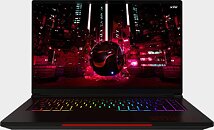Tuesday, December 24th 2019

ADATA to Expand its Product Offerings to Monitors, Laptops and Gaming PCs
ADATA is a company currently selling only memory solutions like SSDs and DRAM, however, the company now wants to try something different in 2020. For starters, ADATA wants to launch more products that will be a part of its Xtreme Performance Gear lineup called XPG shortly. XPG will start offering new products like monitors, laptops, gaming PCs and PC cases with a goal of capturing new market share and try to establish itself as a strong brand of PC gaming products. The new lineup will get revealed with more details at CES 2020, however, we have information of what the new lineup contains.
For starters, XPG will begin with a laptop called Xenia 15, a 15.6-inch gaming laptop with 1080p IPS display and 9th gen Intel core i9 CPU. Next up the chain is a gaming PC called XPG Gaia - 5 liters mini PC with one PCIe slot for a graphics card that's up to 8-inches long. In addition, XPG will showcase a new monitor called Photon equipped with a 27-inch panel that features PixelDisplay's Vivid Color Eye-Safe Display technology which is essentially a technique for blocking out blue light. There is also going to be a new case called XPG Volta, a cylindrical case made out of premium materials such as tempered glass and metal. It is supposed to fit up to E-ATX motherboard and have plenty of room for water-cooling setups. Last but not least, XPG will have two concepts of RGB DDR4 memory modules, with both of them having speeds of up to 4800 MHz and having capacity of up to 32 GB per DIMM.
For starters, XPG will begin with a laptop called Xenia 15, a 15.6-inch gaming laptop with 1080p IPS display and 9th gen Intel core i9 CPU. Next up the chain is a gaming PC called XPG Gaia - 5 liters mini PC with one PCIe slot for a graphics card that's up to 8-inches long. In addition, XPG will showcase a new monitor called Photon equipped with a 27-inch panel that features PixelDisplay's Vivid Color Eye-Safe Display technology which is essentially a technique for blocking out blue light. There is also going to be a new case called XPG Volta, a cylindrical case made out of premium materials such as tempered glass and metal. It is supposed to fit up to E-ATX motherboard and have plenty of room for water-cooling setups. Last but not least, XPG will have two concepts of RGB DDR4 memory modules, with both of them having speeds of up to 4800 MHz and having capacity of up to 32 GB per DIMM.

45 Comments on ADATA to Expand its Product Offerings to Monitors, Laptops and Gaming PCs
there are other games than fortnite too,I think.
who is it for?for someone who doesn't care about performance per dollar but performance overall.
I'm sure you can find more reviews supporting my claim :rolleyes:
lower latency euqals better gaming performance.I thought this needs not be explained on a tech forum like TPU but I was wrong apparently.
yes,it only translates to better gaming performance when you're not entirely gpu limited.
www.techpowerup.com/review/intel-core-i7-8700k-coffee-lake-memory-performance-benchmark-analysis/9.html
no,cause it'd be contrary to anything I've ever seen while testing myself.
this tpu test has 2133 running at the same fps as 3866,I guess you can believe this if it's more convenient to you. :rolleyes:
I have some of their older SATA SSD's running in my back-up rig & several of my young relative's rigs, and they are of good quality, but they were made back when ADATA's only products were SSD's, flash drives and ram....
They said up to DDR4 4800 and up to 32GB per dimm. But no where did they say it is both at the same time.
It is not guaranteed to get DDR4 4800 running even on Intel platforms, let alone with 32GB sticks which are quad-rank sticks.
Also even if they manage to get 64GB of DDR 4800 ram to run stable in dual-channel, they are most likely going to be Micron Rev E dies which generally have much looser timings.TLDR the actual latency on DDR4 4800 are not necessarily better than, lets say some of the new 3600 CL14 kits from Team or the 3800 CL14 kits from G.skill.
People that actually needs lots of ram are most likely looking into ECC ram which Intel does not support on their mainstream platforms.
evertyhing has a sweet spot.
doesn't mean there's no performance to squeeze.
Situational performance does not match the 'ultimate performance target' that one would have with a top-end hardware setup, right?